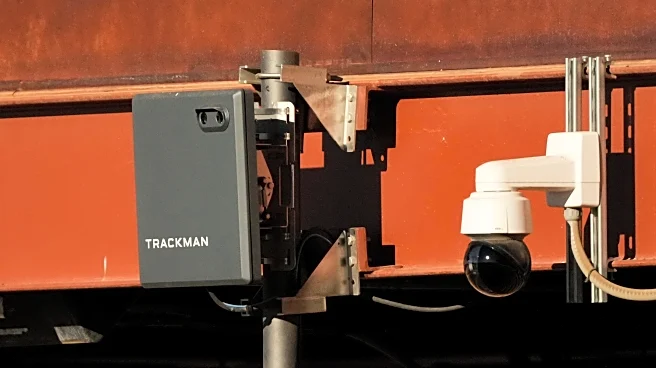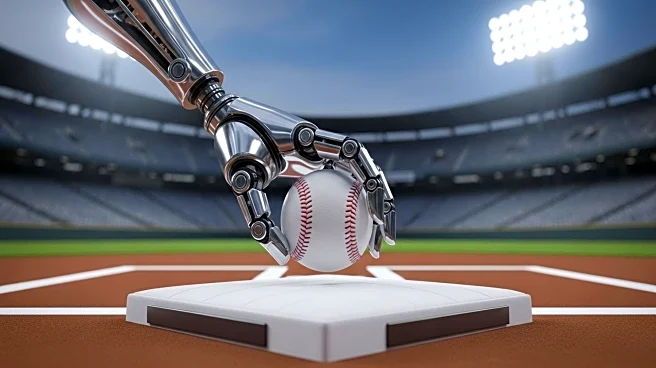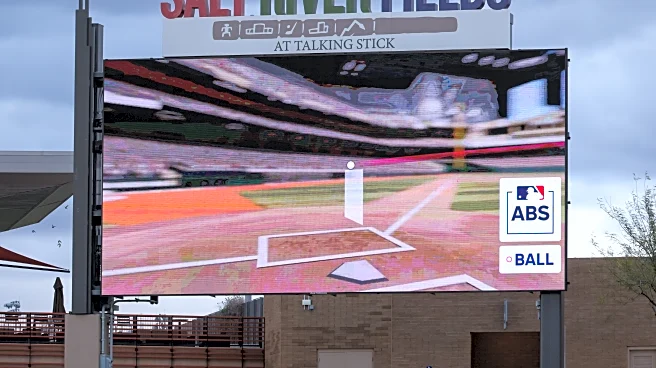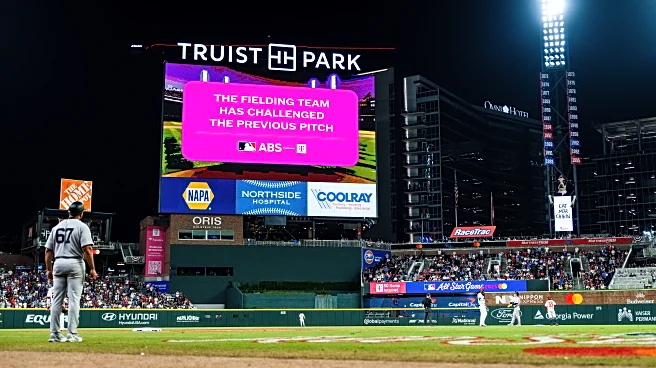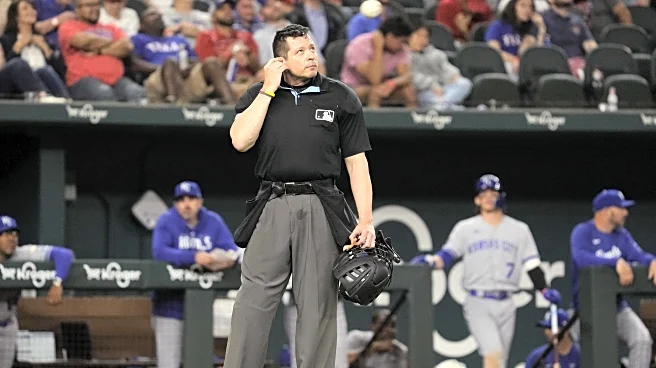What's Happening?
Major League Baseball (MLB) is set to introduce robot umpires in the 2026 season following approval from its 11-man competition committee. The Automated Ball/Strike System (ABS) will be implemented using a challenge system where human umpires make initial calls, which can then be appealed to the computer system. This technology has been tested in the minor leagues since 2019 and more recently at Triple-A and MLB spring training games. The system uses Hawk-Eye cameras to track pitches and determine if they fall within the strike zone, which is a rectangle as per the rule book. The challenge system allows each team to challenge two calls per game, with additional challenges available in extra innings. Successful challenges allow teams to retain their challenge rights. The ABS aims to improve fairness and speed up the game, with the process averaging 17 seconds per challenge.
Why It's Important?
The introduction of robot umpires in MLB represents a significant shift in how the game is officiated, potentially impacting the accuracy and speed of ball/strike calls. This move could lead to more consistent and fair outcomes, reducing human error in critical game situations. The challenge system empowers players to contest calls, potentially altering game strategies and outcomes. The technology's success in minor leagues suggests it could enhance the viewing experience for fans by providing more precise officiating. However, it also raises questions about the traditional role of human umpires and the potential for technology to replace human judgment in sports.
What's Next?
As MLB prepares for the full implementation of robot umpires in 2026, teams and players will need to adapt to the new challenge system. Training and familiarization with the technology will be crucial for players, coaches, and umpires. MLB will likely continue to refine the ABS technology and challenge protocols based on feedback and performance data from the upcoming season. The league may also face reactions from traditionalists who value the human element in officiating. The success of this initiative could influence other sports to consider similar technological integrations.


